Auto-Theft Warning - Only Bring What You Need to the Park
You can help prevent vehicle break-ins in parking lots. Before leaving your car to catch the ferry: 1) Remove all valuables, 2) Lock your doors. 3) Take your cell phones and electronics with you. Read article for more details.
| Title | Alcatraz Island |
| Park Code | alca |
| Description | Alcatraz reveals stories of American incarceration, justice, and our common humanity. This small island was once a fort, a military prison, and a maximum security federal penitentiary. In 1969, the Indians of All Tribes occupied Alcatraz for 19 m... |
| Location | |
| Contact | |
| Activities |
|
| Entrance fees |
|
| Campgrounds | Count: 0
|
| Places | Count: 50
1 - USSGS Bay Studies10 - Family Housing11 - Alcatraz Gardens12 - Water Tower13 - Rose Garden14 - The Morgue15 - Officers' Row16 - Warden's House17 - Staff Housing18 - Military Parade Ground19 - Indian Occupation2 - Guard Tower20 - How Will the San Francisco Waterfront Look in 2100?21 - Alcatraz Lighthouse22 - City Skyline23 - New Homes From Old24 - Snowy Egrets and Herons25 - West Side Gardens26 - First Escape Attempt27 - Seabirds28 - Tide Pools3 - Guardhouse and Sally Port30 - Alcatraz Island: Wildlife Habitat in the Bay4 - Flank Defense Howitzer5 - Officers' Club6 - Quartermaster Warehouse & Powerplant7 - Powering Alcatraz8 - Industrial & Laundry Building and Bird Nesting9 - Lower Military PrisonAlcatraz Agave TrailCheck out the Agave Trail on the southern side of the island. Get a sense of Alcatraz's lesser known natural beauty by experiencing the flora and fauna of the Rock, home to many a feathered friend. Bird life and enviable views of the city make the Agave Trail a great alternative or addition to the main tour. The trail is open when the birds are not nesting, typically from about mid October to mid January. 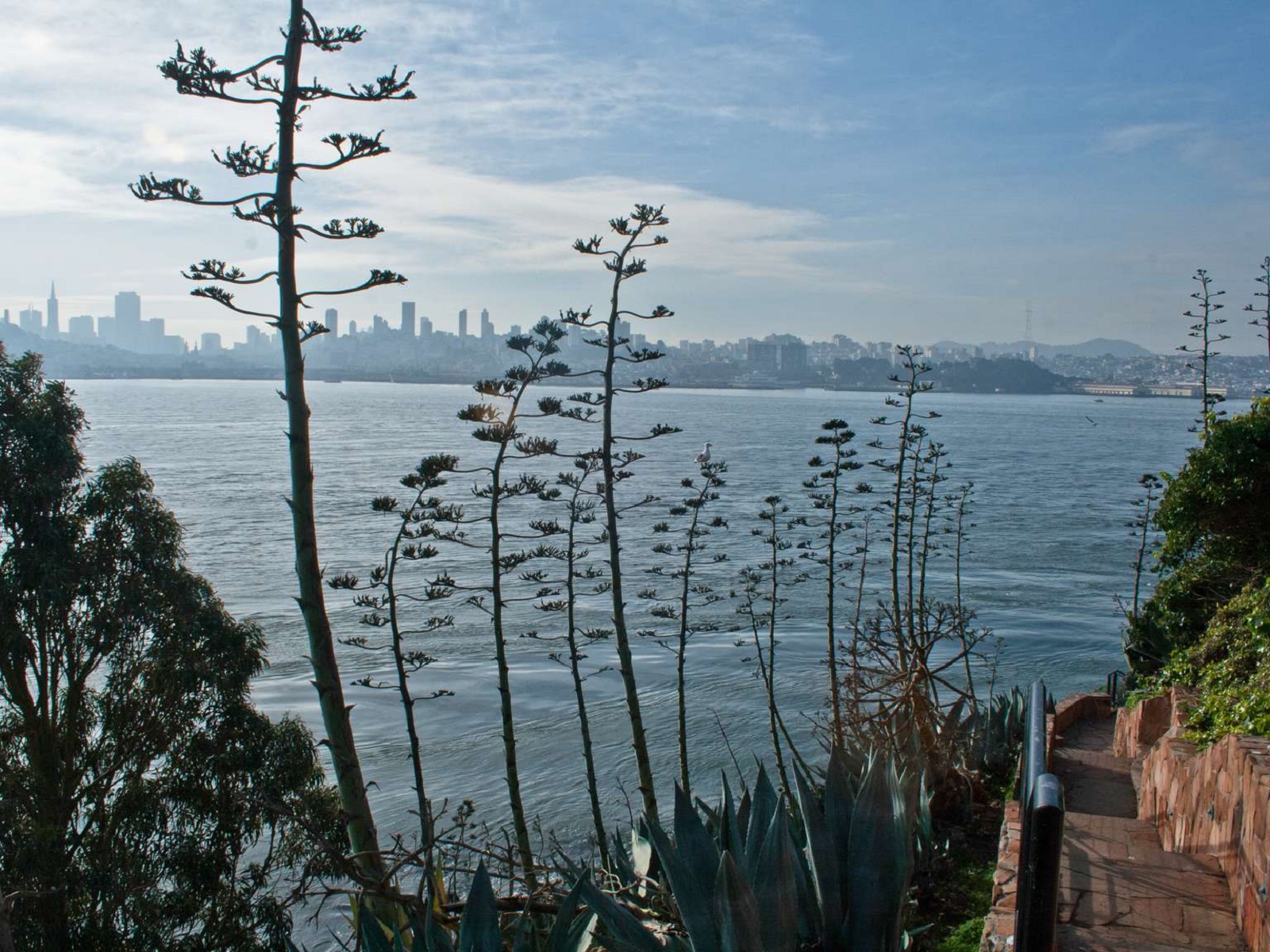
Alcatraz Building 64Building 64 is located above the dock as soon as you arrive off the ferry. Originally, it was part of the fortress protecting the bay. Later it served as housing for the military officers and their families living on the island. Over the years it was expanded, and by the early 1900s it was converted into the Military Guard Barracks. 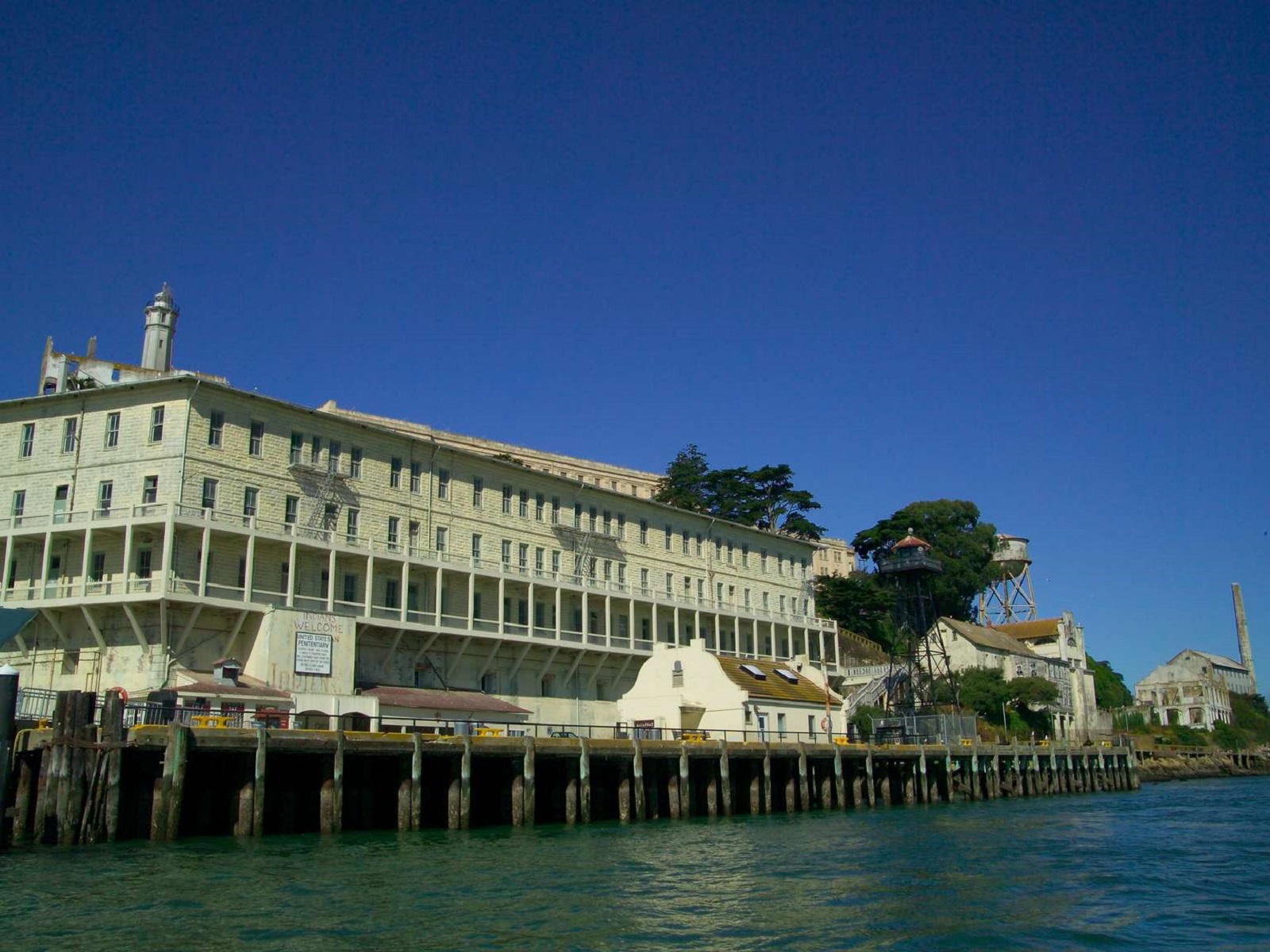
Alcatraz CellhouseThe prison building, built between 1910 and 1912 when Alcatraz was still a military prison, is a three-story cellhouse with four cellblocks. 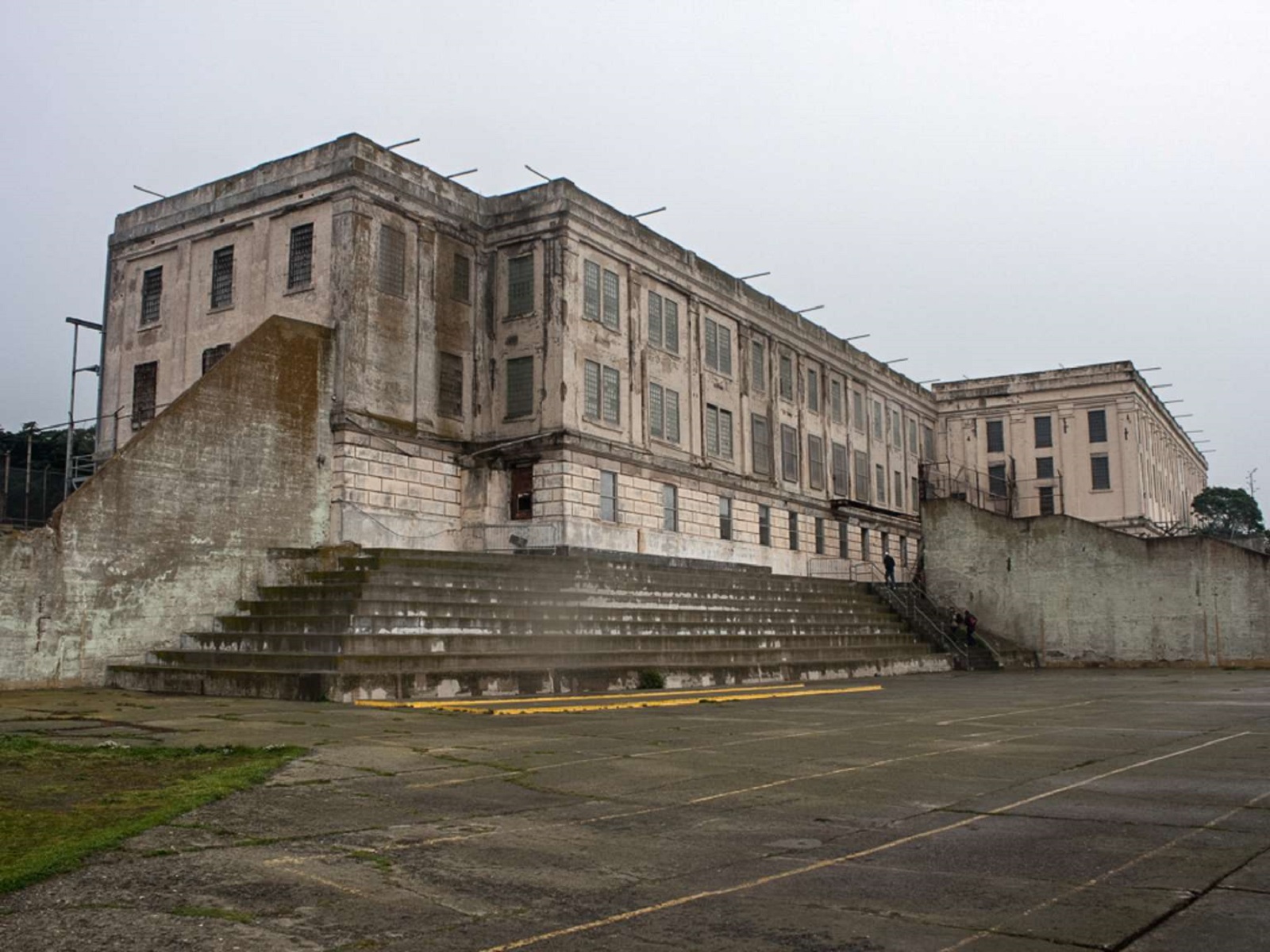
Alcatraz Dock: Prisoners at WorkThe Alcatraz Dock was the stepping off point for enlisted soldiers, officers and their families, federal Bureau of Prison employees and their wives and children, notorious federal prisoners, and Native American activists as they arrived on the Rock over the centuries. 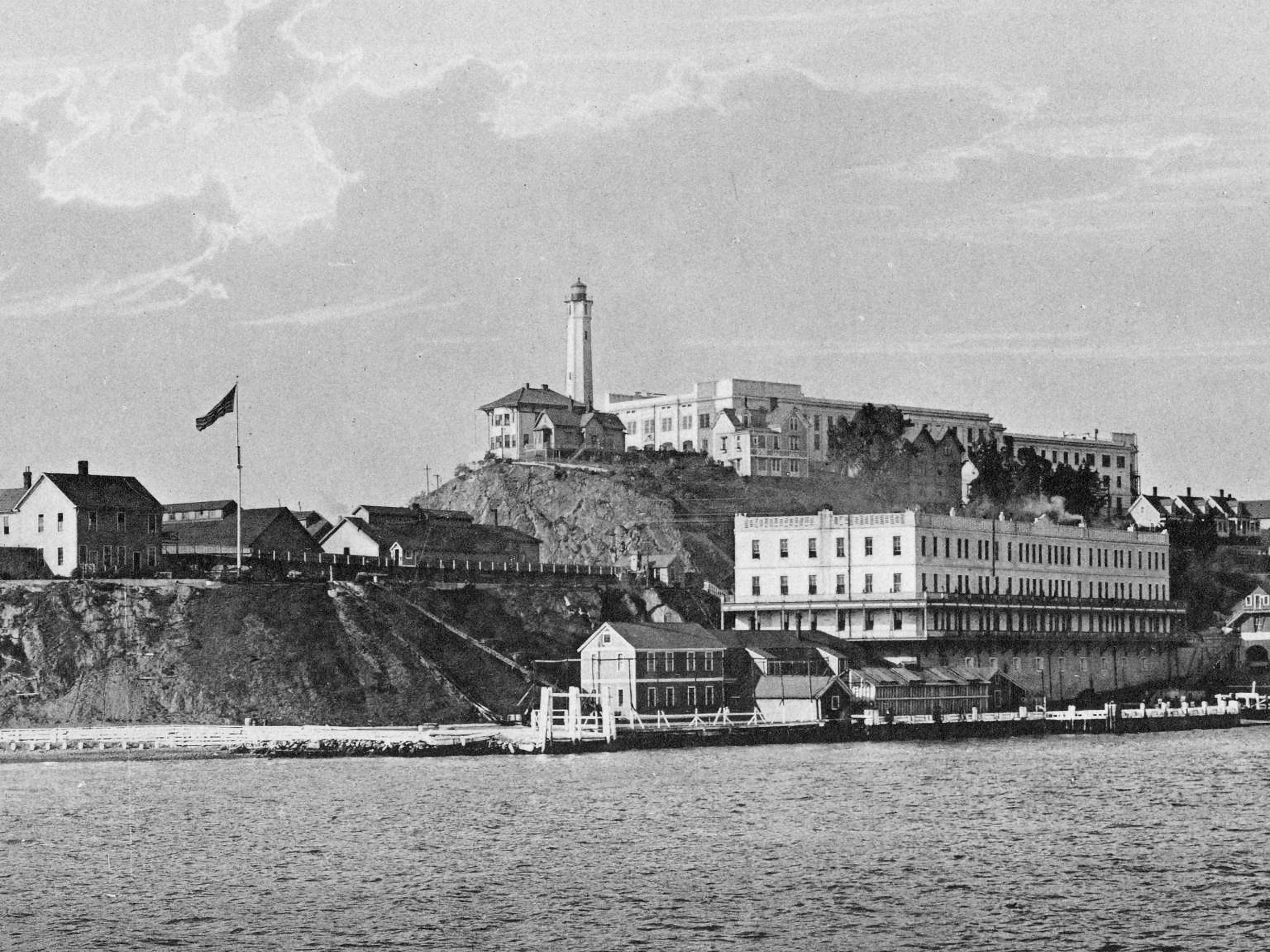
Alcatraz GardenThe Garden Conservancy is partnering with the Golden Gate National Parks Conservancy to bring a host of unique plants to the island. 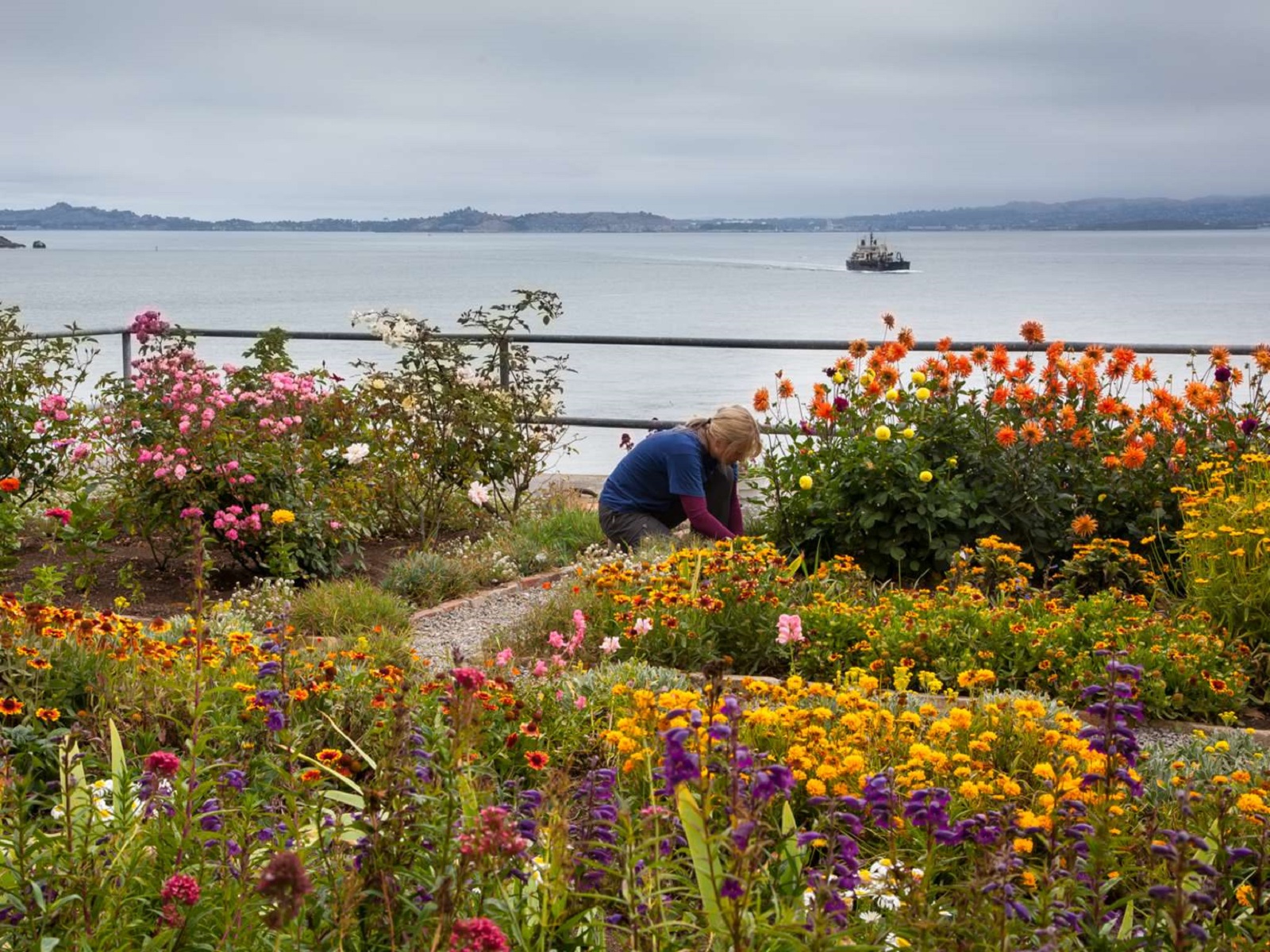
Alcatraz Guard TowerThe Guard Tower was the last line for guards to secure the island. If the men on duty saw or heard anything unusual, they would sound the alarm that went out over the whole island. Long hours in the tower meant that it had to be equipped with all the necessary facilities. 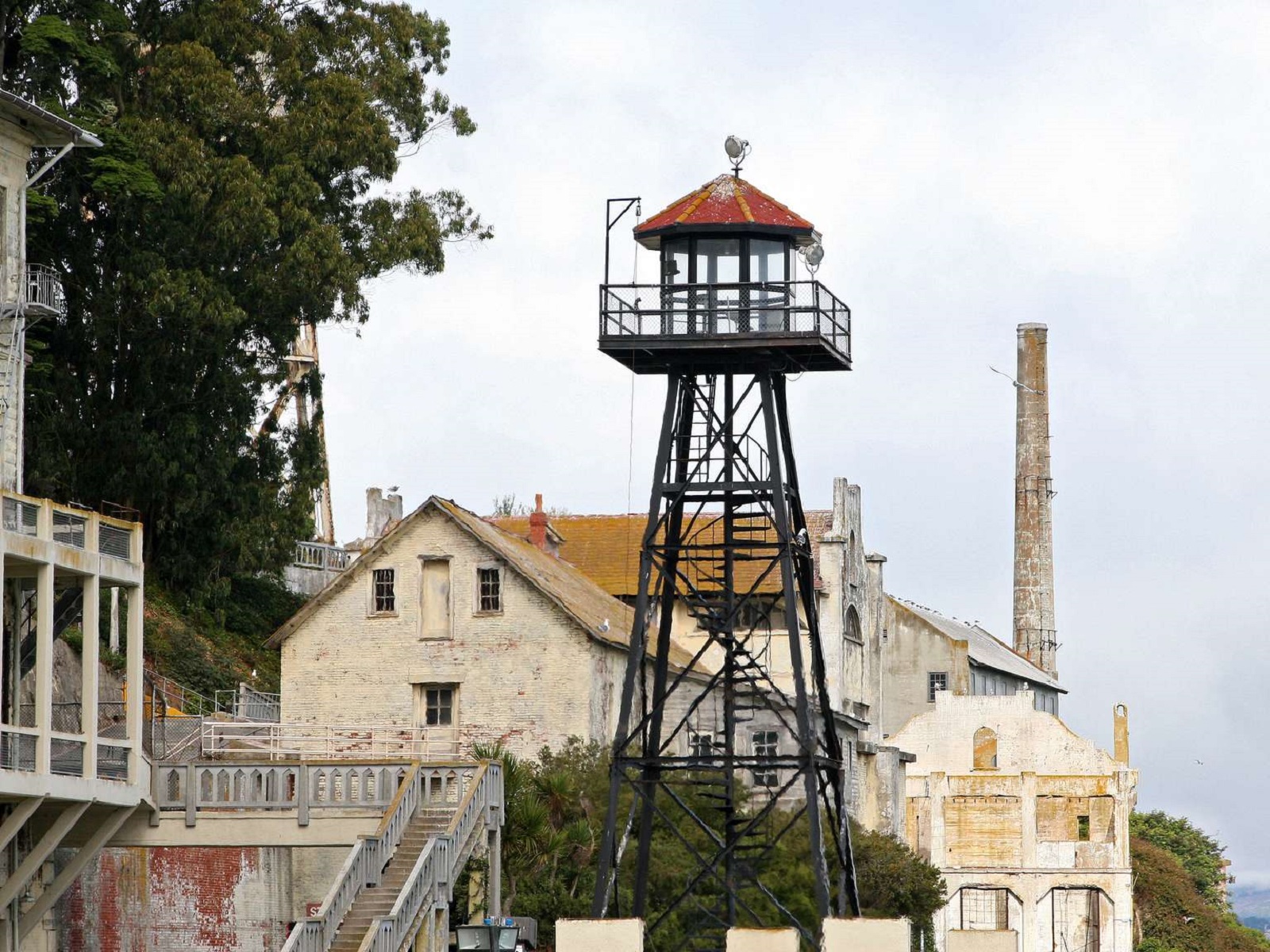
Alcatraz IslandAlcatraz Island, the site of pre-Civil War-era fortifications, was the nation’s first military prison, which later became the most notorious maximum security penitentiary in the United States. On November 9, 1969, American Indian people once again came to Alcatraz Island when Richard Oakes, a Mohawk Indian, and a group of Native American supporters set out in a chartered boat to symbolically claim the island for the native people. 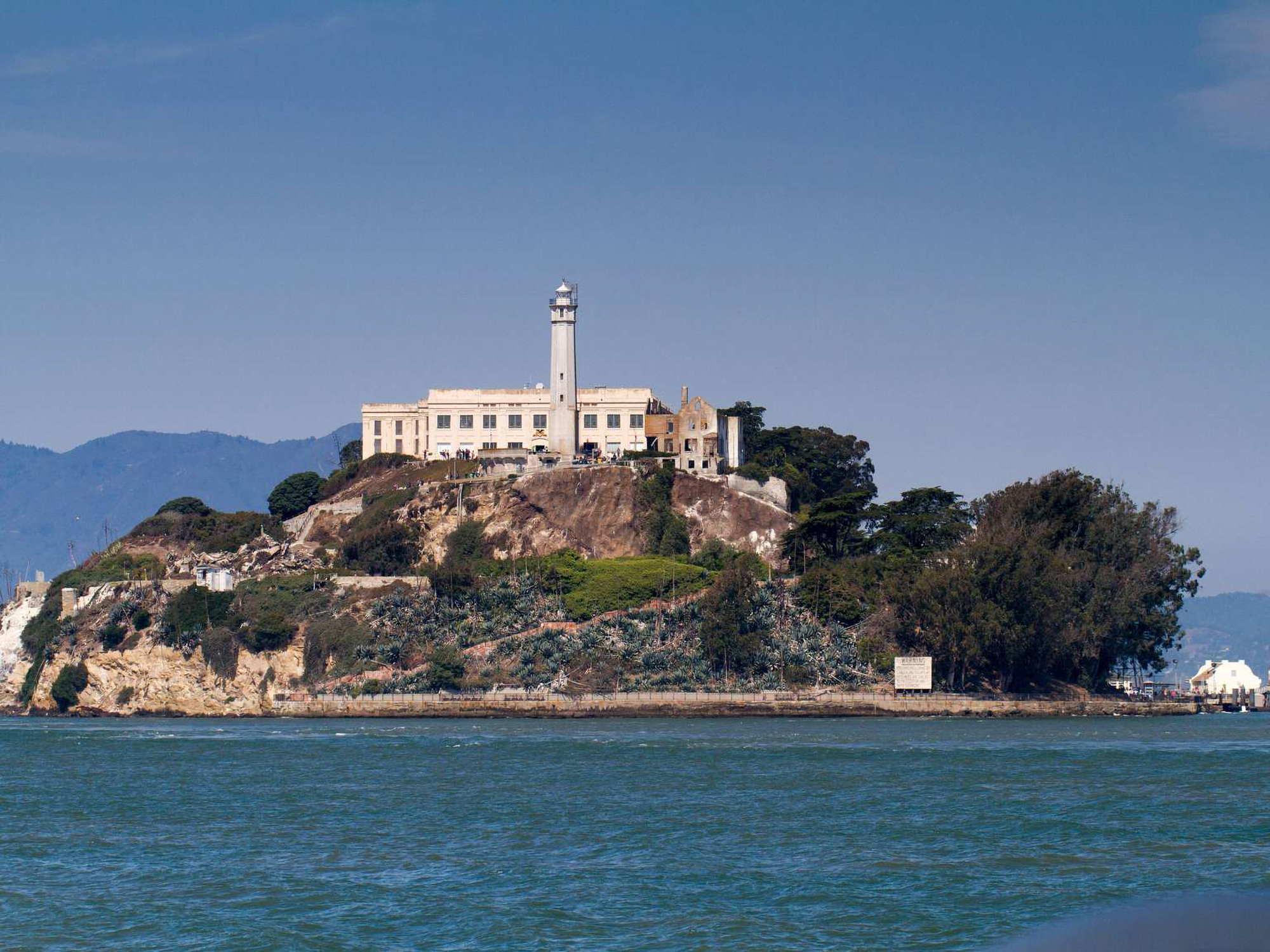
Alcatraz LighthouseThe original Alcatraz lighthouse, constructed in 1854, was the first lighthouse built on the US West Coast. The lighthouse served as a navigational aid for over 50 years. The cottage-style lighthouse building was replaced by the taller 95 foot structure in 1909 because it was no longer tall enough to shine over the new cellhouse. In 1963, when the penitentiary closed, the lighthouse became automated and a modern beacon was added. 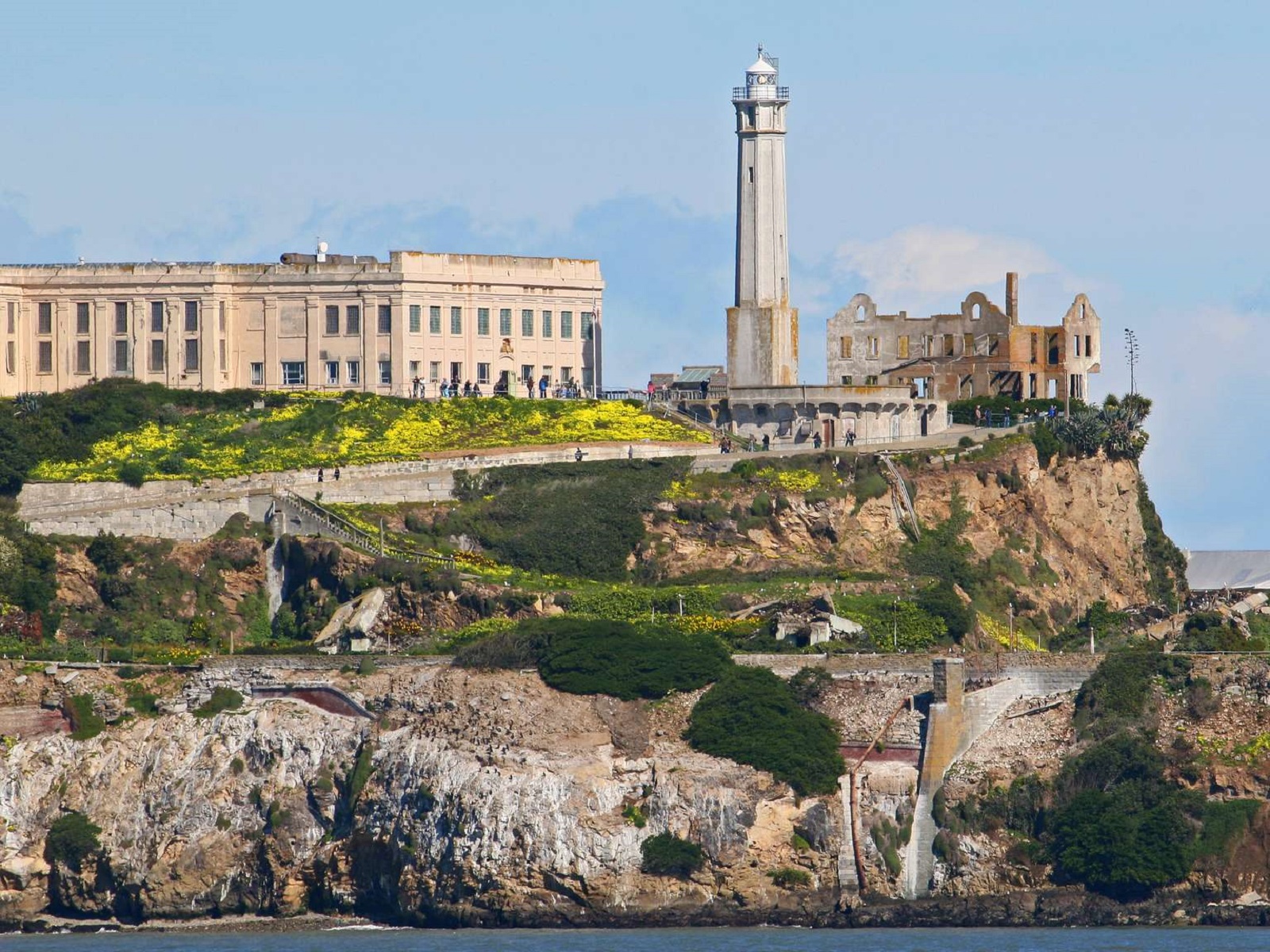
Alcatraz MorgueThe army built the morgue in 1910 and the building remained intact through the time of the modern prison. However, it never saw much use. During the prison years the morgue was used just once, to store a deceased prisoner overnight until a ferry could take the body to the mainland the following morning. The Bureau of Prisons converted the morgue to house a spare back up generator, which can still be seen inside. 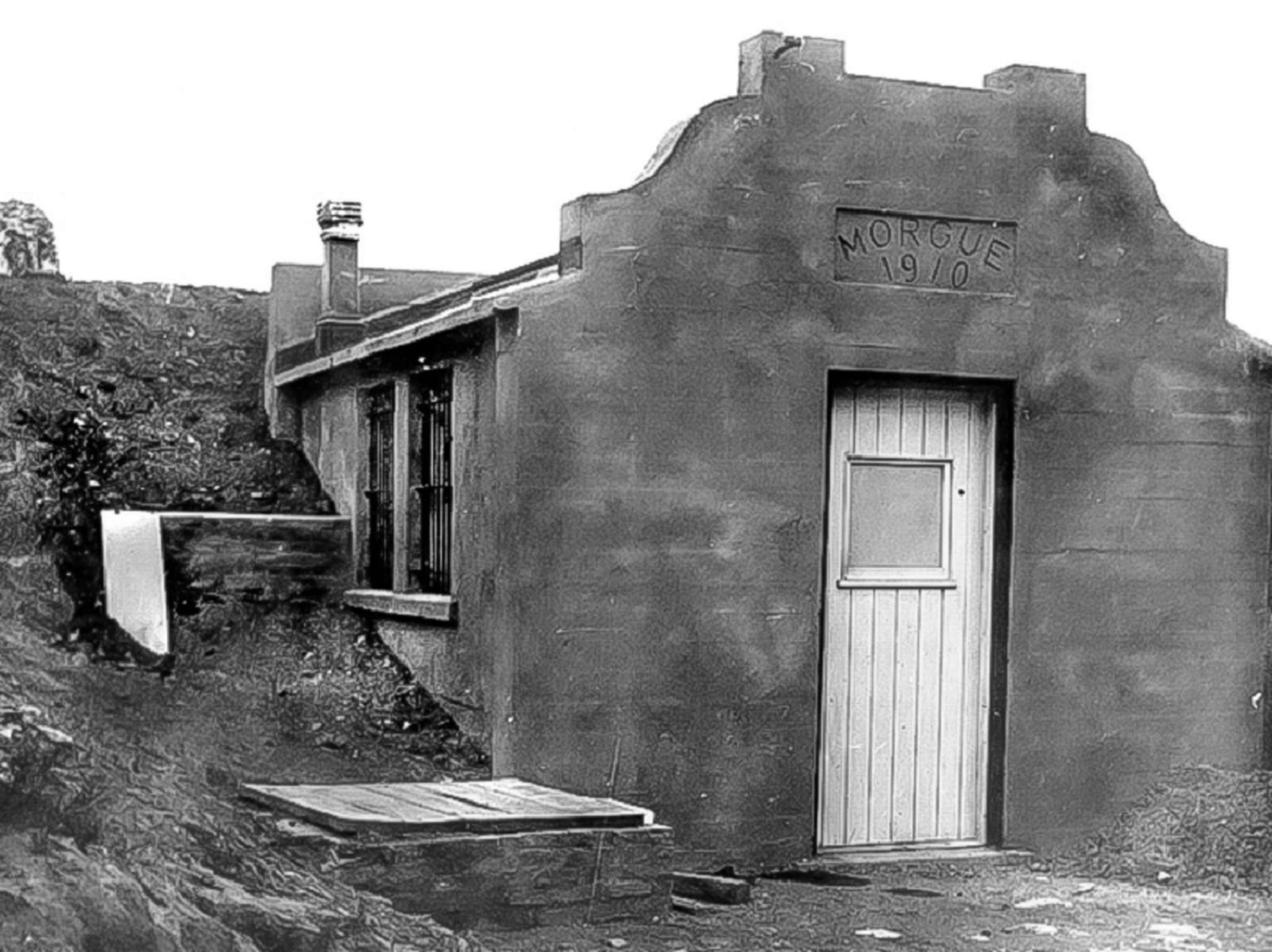
Alcatraz New Industries BuildingAlcatraz put the men incarcerated on the island to work manufacturing all sorts of things in the New Industry Building. Constructed in 1939, the complex held a clothing factory, laundry, furniture plants, as well as a brush factory. Men washed army uniforms, made gloves, wove mats, and constructed furniture. 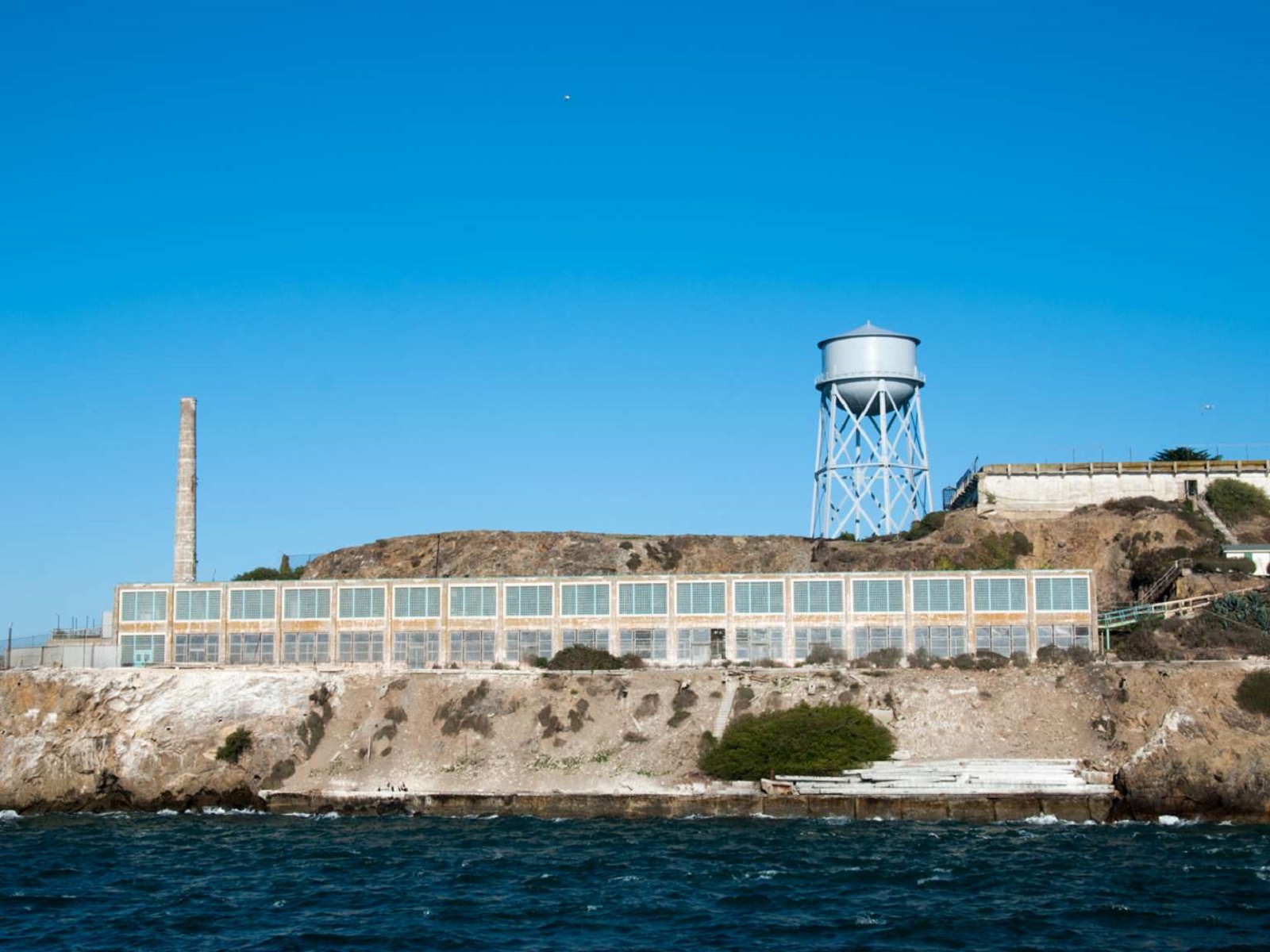
Alcatraz Parade GroundThe Parade Grounds are an open area on the south end of Alcatraz that host surprisingly few parades. It's an excellent spot for a selfie with an awesome view of the skyline of San Francisco. Turn around, and you have the lighthouse and warden's residence for a backdrop. 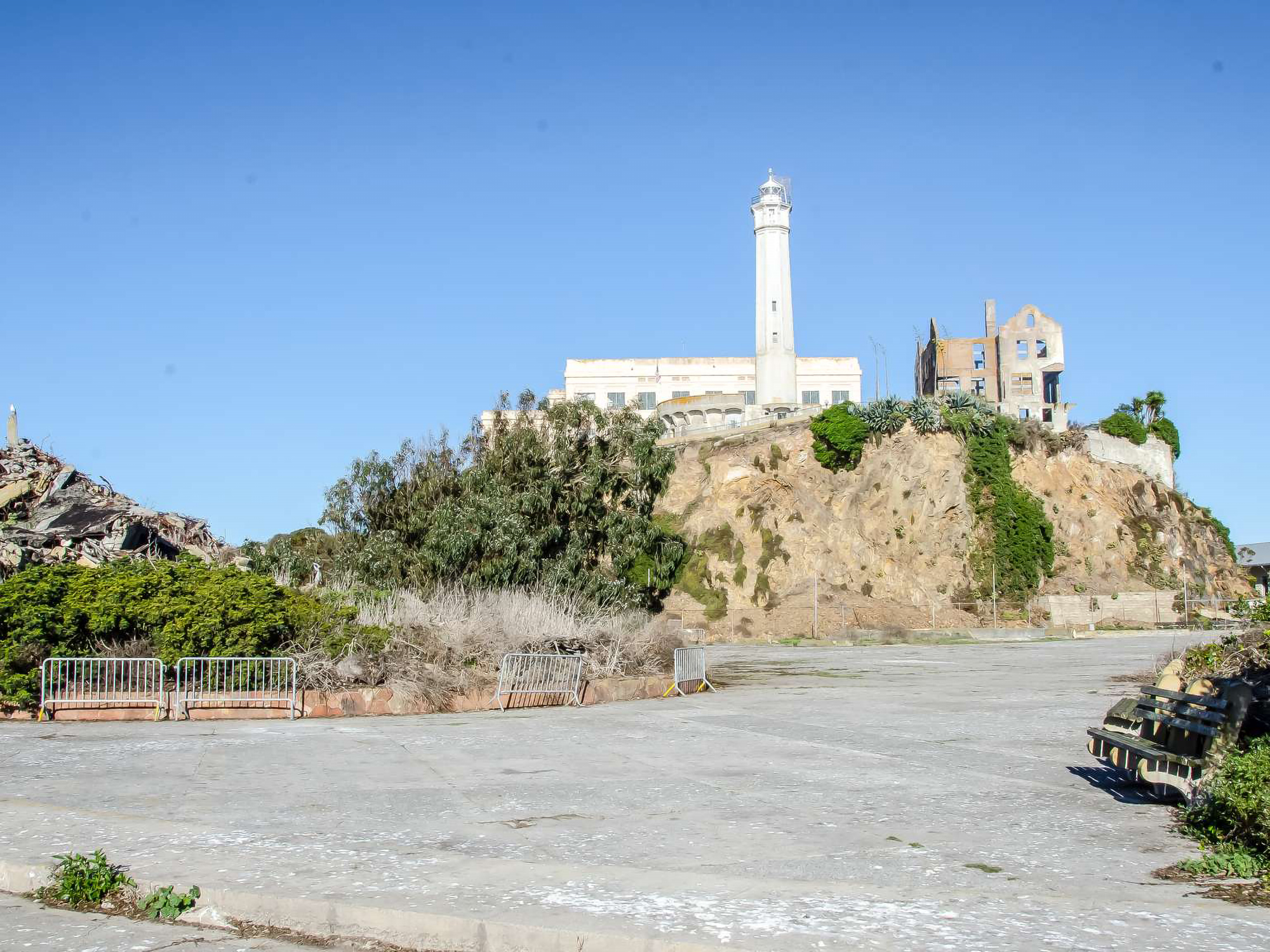
Alcatraz Power PlantBecause of its geography, Alcatraz poses unique challenges when it comes to power and sustainability. The Golden Gate National Recreation Area has taken these challenges head-on and developed several ways to improve efficiency and limit energy expenditure. Be it water usage, garbage management or carbon emissions from electricity production or transportation, we are addressing the problems. 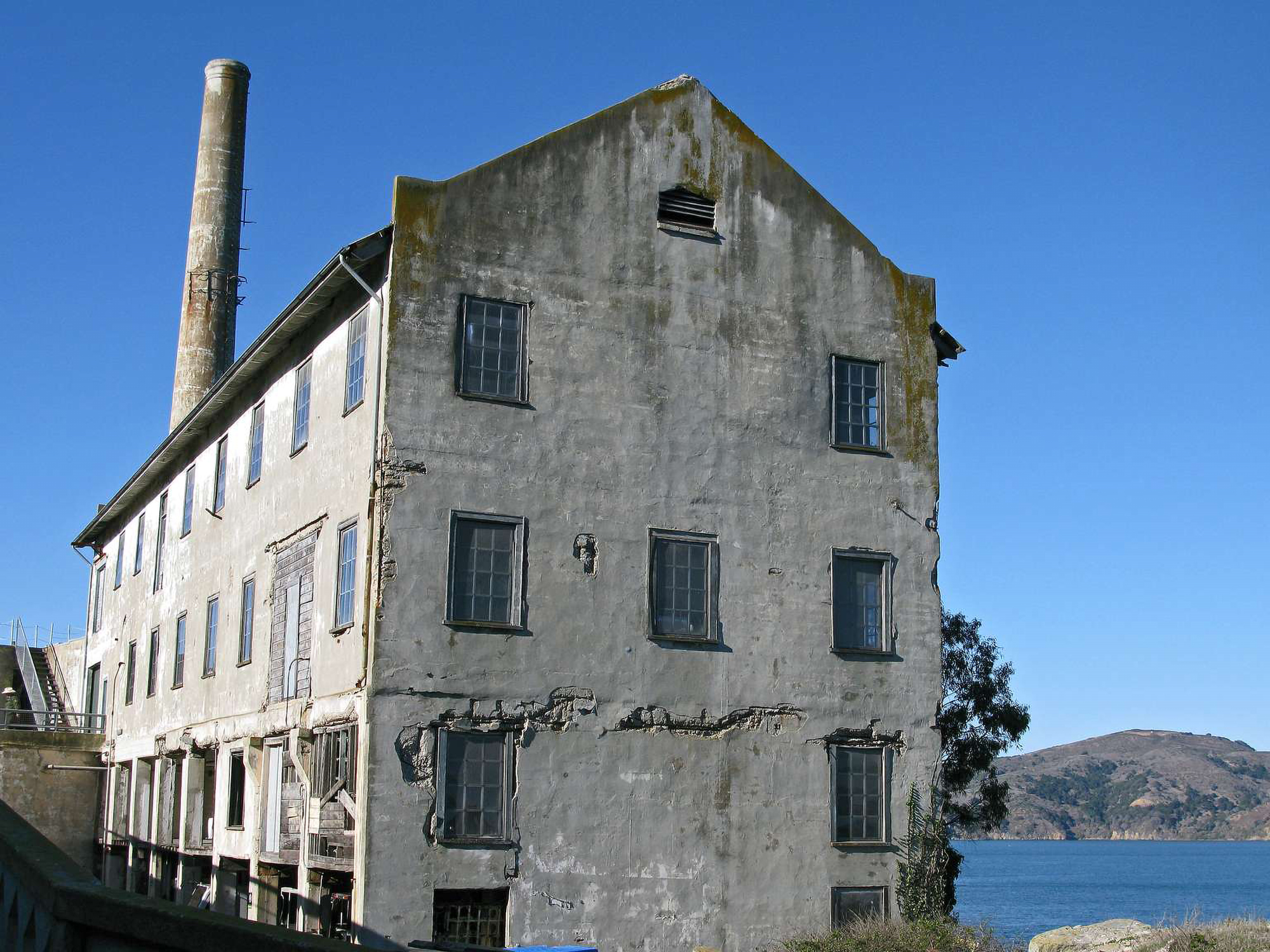
Alcatraz Recreation YardThe recreation yard is an outdoor area on the west side of D-Block next to the Dining Hall surrounded by a high wall and fence facing the mainland. Here, inmates were afforded a chance to relax, play games like baseball and exercise. Still, even in this welcome respite from the cellblock, the inmates were closely guarded. 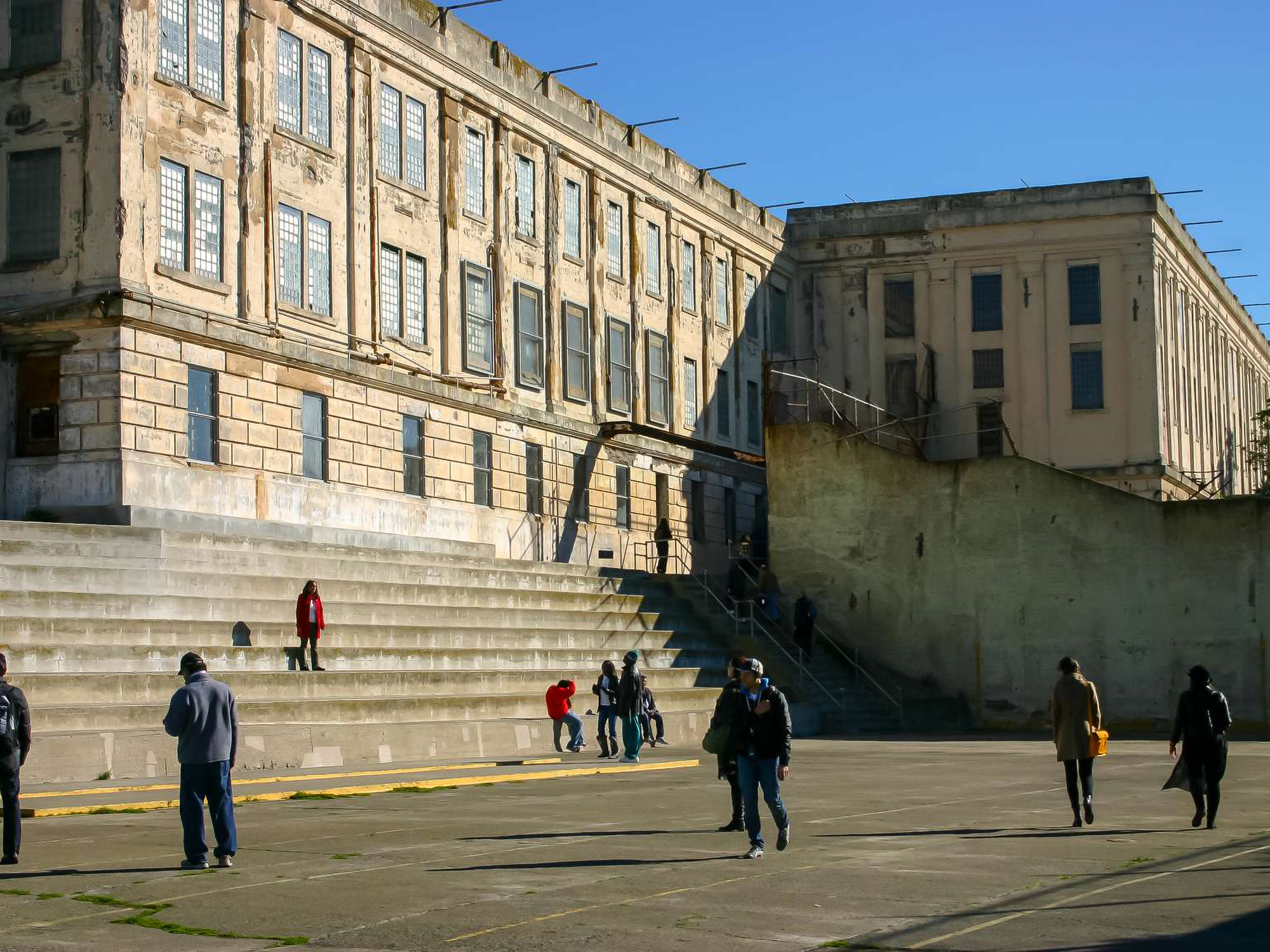
Alcatraz Sally PortDuring the 1860s, Alcatraz was the most fortified military site on the West Coast with over 100 cannons facing the bay in case of would-be intruders. The guardhouse was built in 1857, and contained the island's first prison, a US military stockade in the building's basement. That facility was used to house unruly soldiers and during the Civil War, Confederate spies. The guardhouse featured a sally port, an armored, controlled entryway to the fortress on Alcatraz beyond. 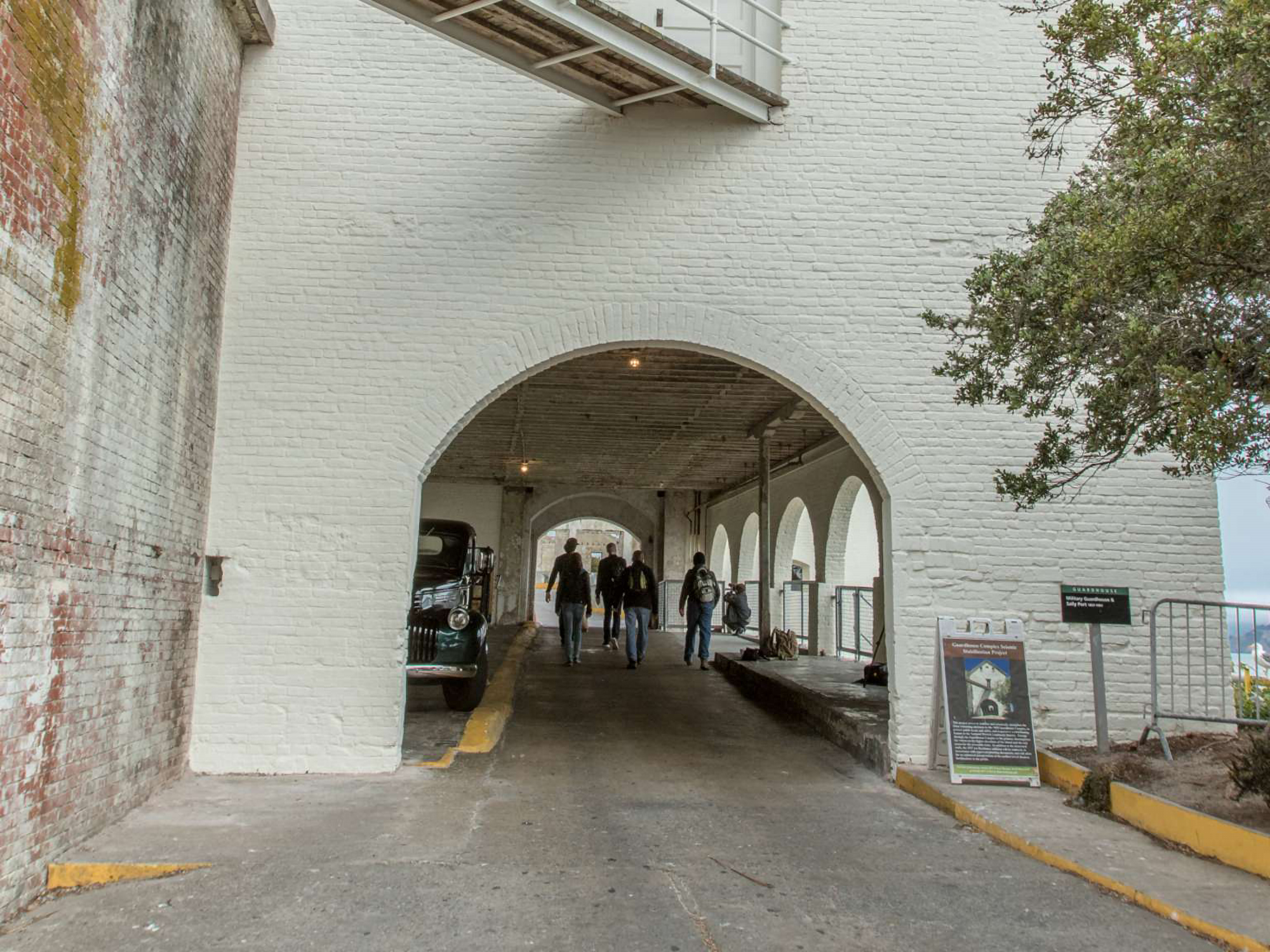
Alcatraz Warden's HouseThe Warden's house, a 15-room mansion built in 1921, was home to four wardens between 1934 and 1963. Despite their serious jobs, the wardens knew how to entertain, and were known to throw lavish cocktail parties just a few feet from the cellhouse. Regardless of their neighborly proximity, prisoners were kept off the guest list. The house is considerably less swanky today, as it burned down during the Indian Occupation of Alcatraz. 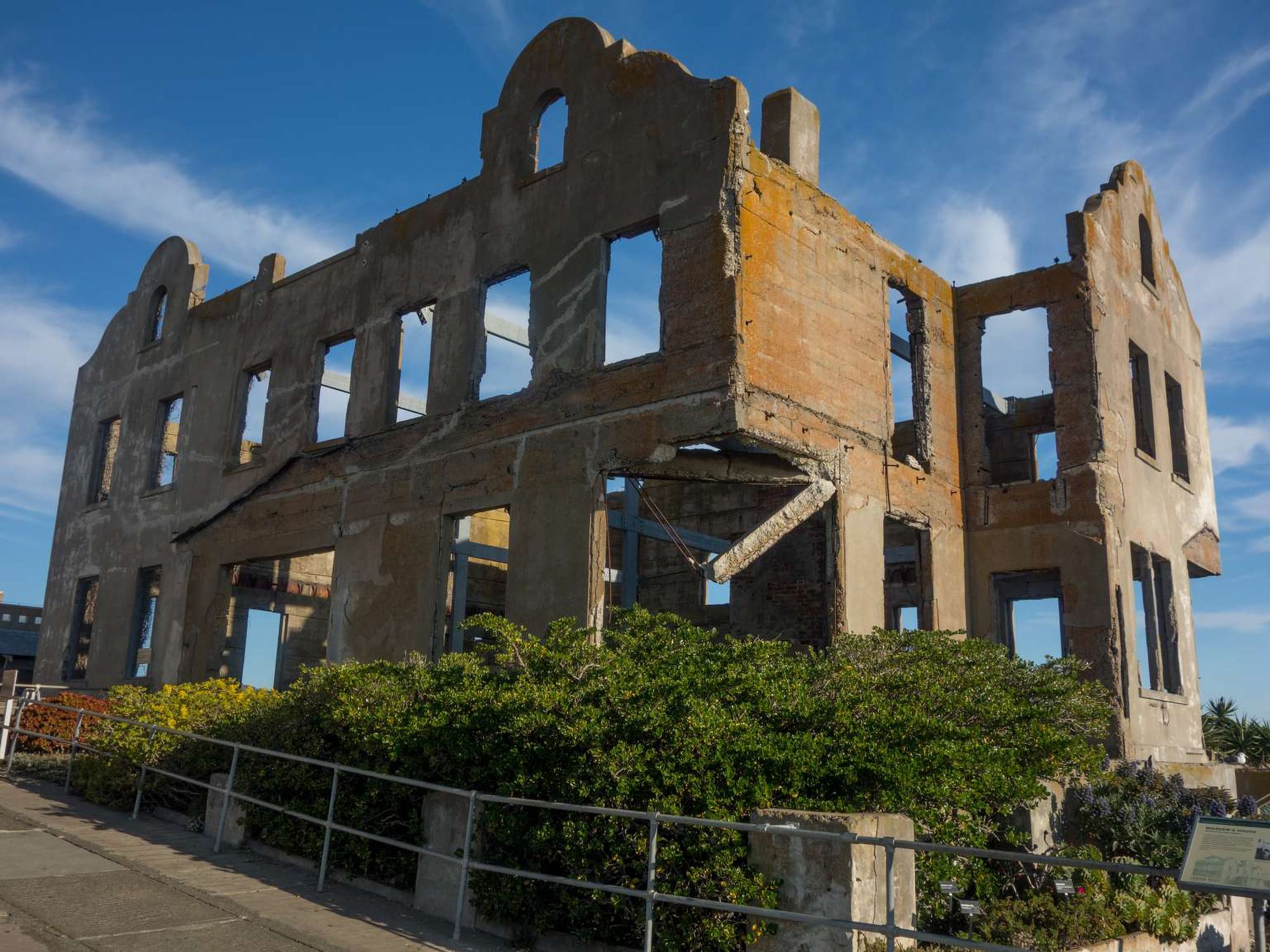
Alcatraz Water TowerThe Federal Bureau of Prisons erected the water tower in 1940, as the island doesn't have its own water source. It rivals the lighthouse for bragging rights as the tallest structure on the island, but comes in one foot short, at a height of 94 feet. The tower was the source of the prison's drinking water, but also held enough for the prison laundry and an additional reserve in case of fire. 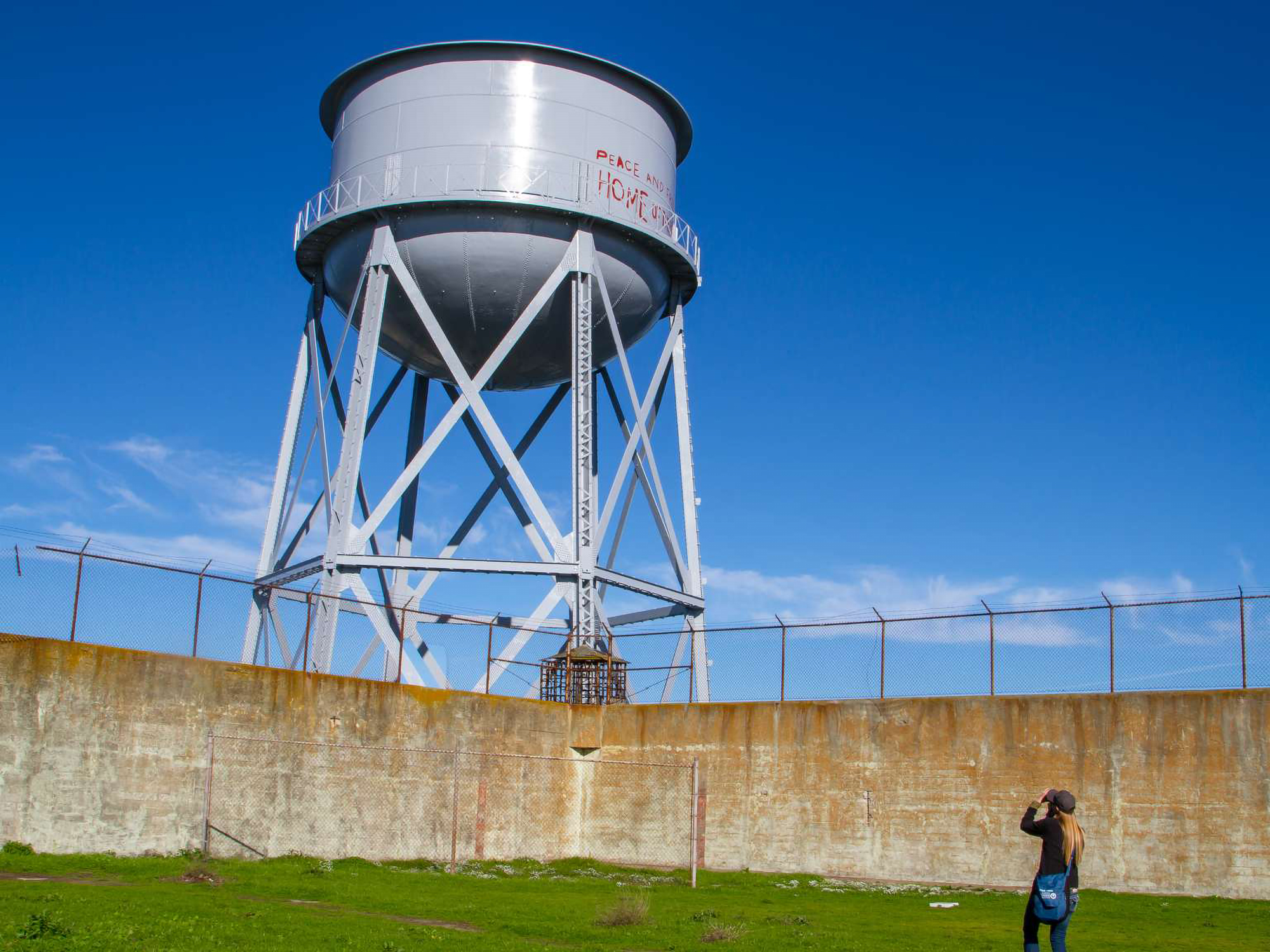
Building a New Prison: Prisoners at WorkIn the early 1900s, the population of men incarcerated at Fort Alcatraz grew to more than 500. Most were soldiers who committed crimes while fighting Filipino nationalists after U.S. annexation of the Philippines following the Spanish American War (1898). In 1907, as the prison population grew, the army renamed the island from Fort Alcatraz to U.S. Military Prison Alcatraz Island. 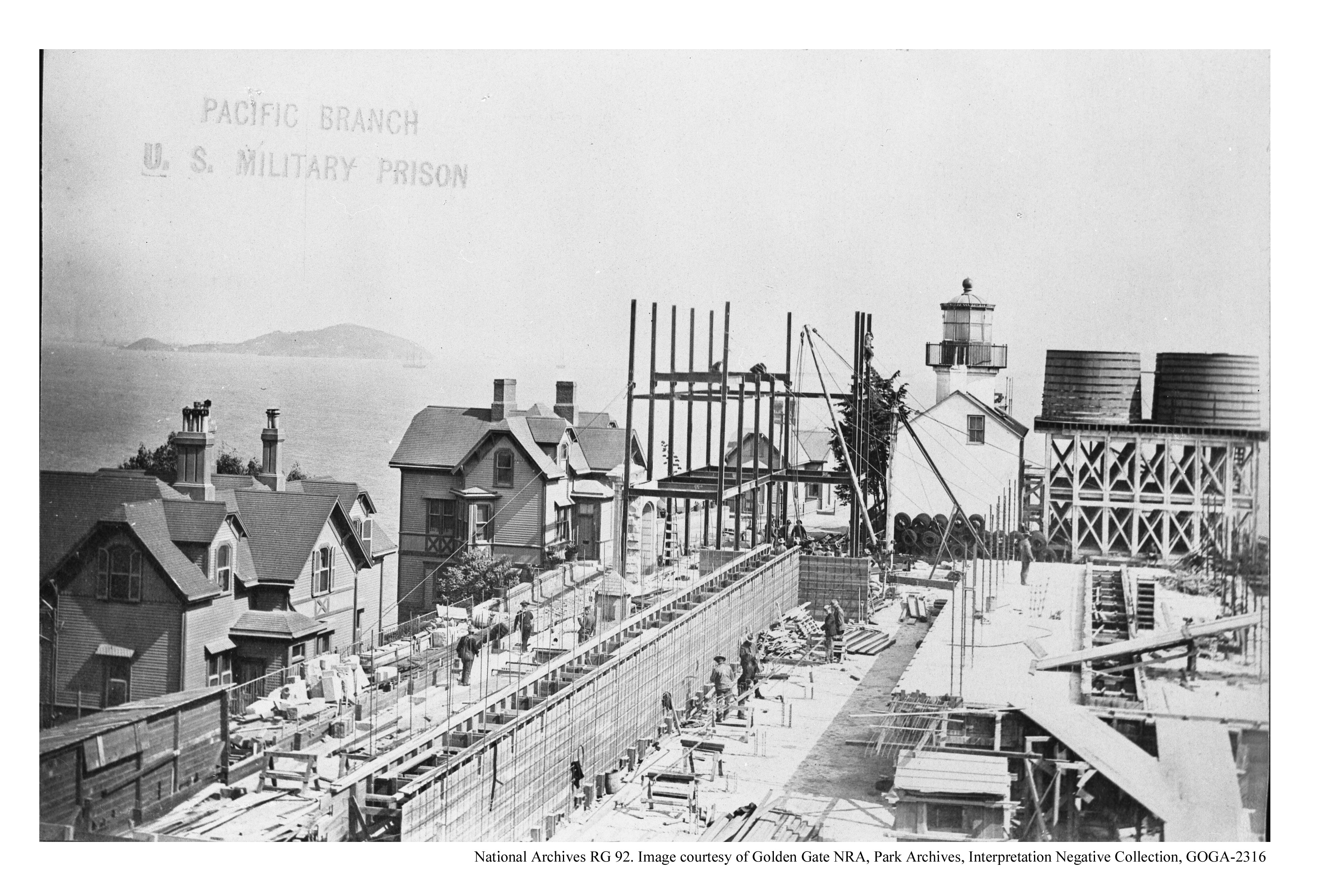
Conclusion: Prisoners at WorkThe men imprisoned on Alcatraz worked at facilities around the island, performing duties like cleaning floors or kitchen duty. Others labored in workshops and laundries in the industries buildings. The men got more than a respite from their cells; they also could reduce their sentences with time off for good behavior. But they could lose this "good time" if they caused trouble. 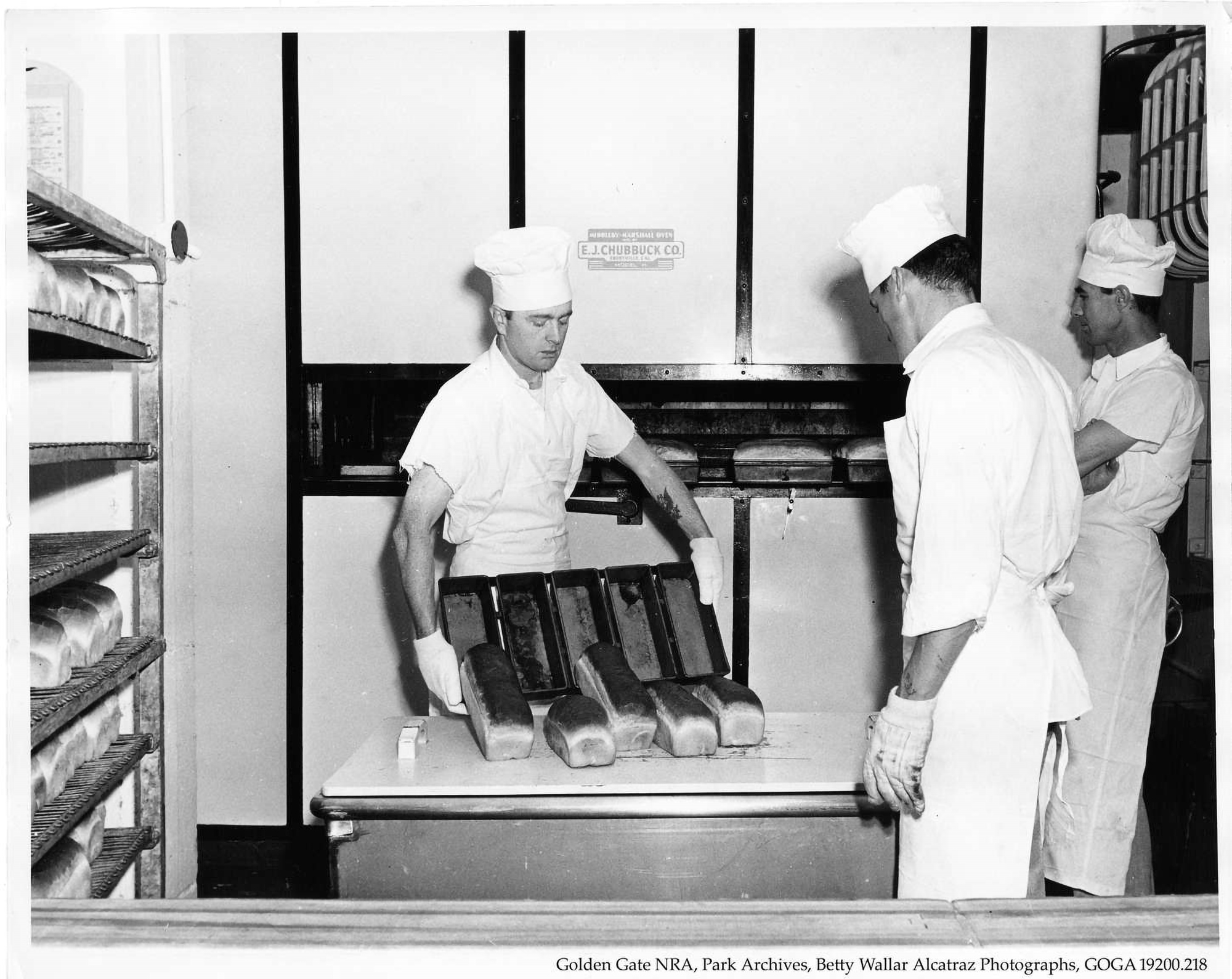
Keeping the Legacy Alive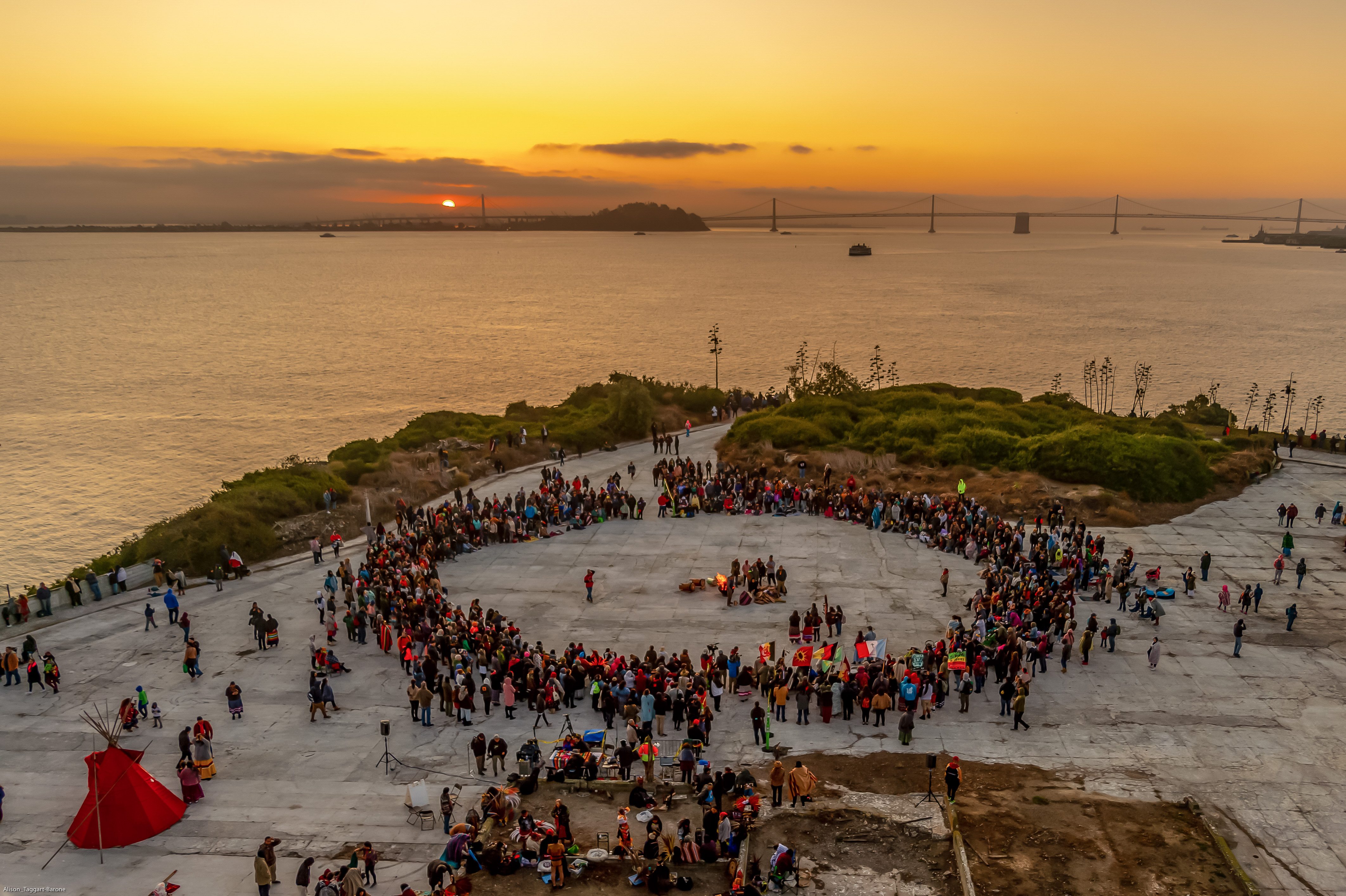
Lower Prison Complex: Prisoners at WorkLook back down the road and imagine a complex of wooden structures running from here to the Sallyport. These buildings formed the Lower Prison complex, constructed in 1867. Up to 150 men were held here in 150 small cells. The complex also had workshops for making hats and boots, a blacksmith shop, a school for military prisoners, and a mess hall. Most soldiers detained here had committed crimes or broken army regulations. 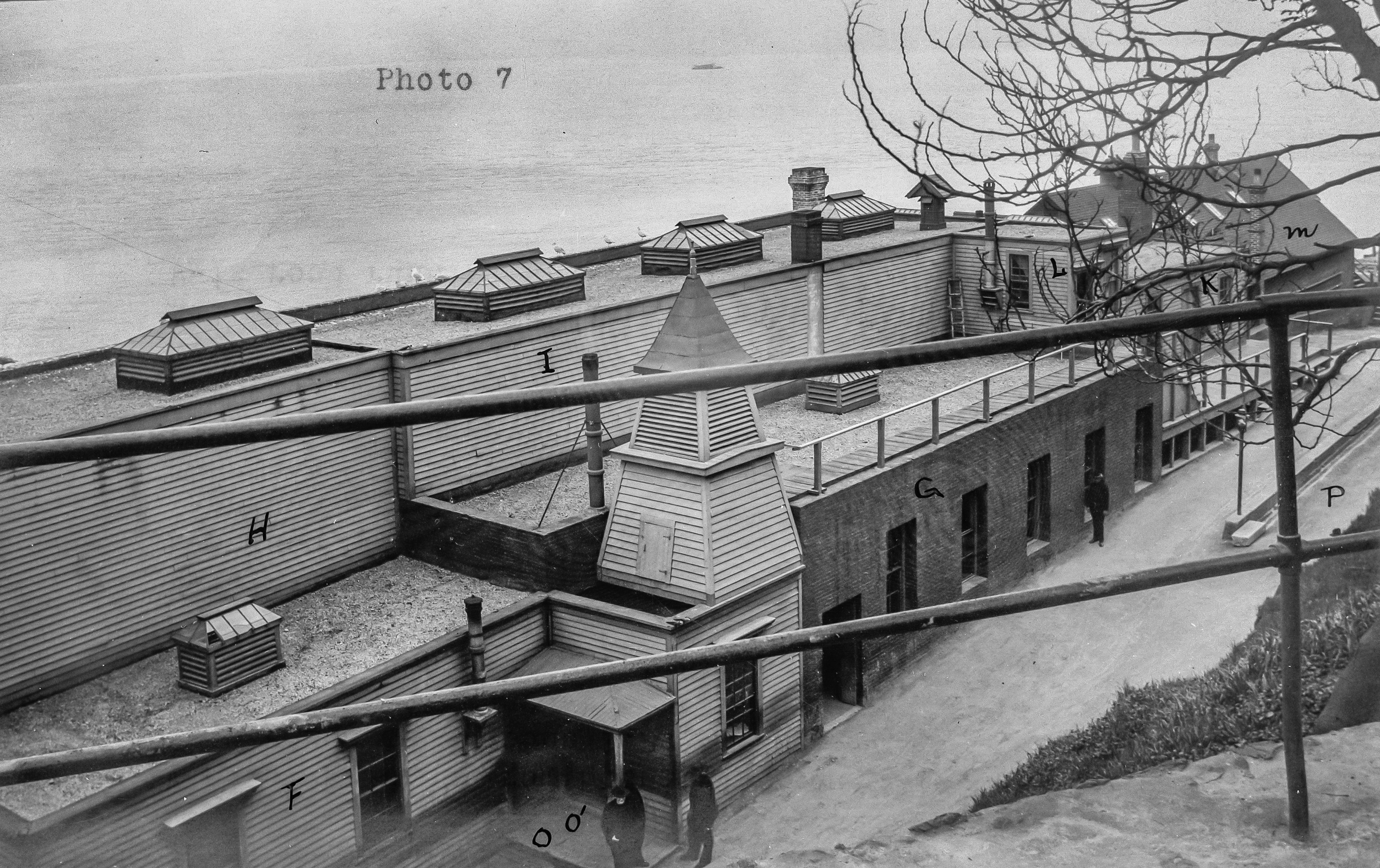
Model Industries Building: Prisoners at WorkThe army built the Model Industries Building in 1922 to retrain imprisoned soldiers at the U.S. Disciplinary Barracks. The structure contained a blacksmith shop, plumbing shop, a vocational training school, other workshops, and a band practice room. While some continued to break rocks under heavy guard, others engaged in tending the gardens on the Rock's barren landscape, a form of horticultural therapy. 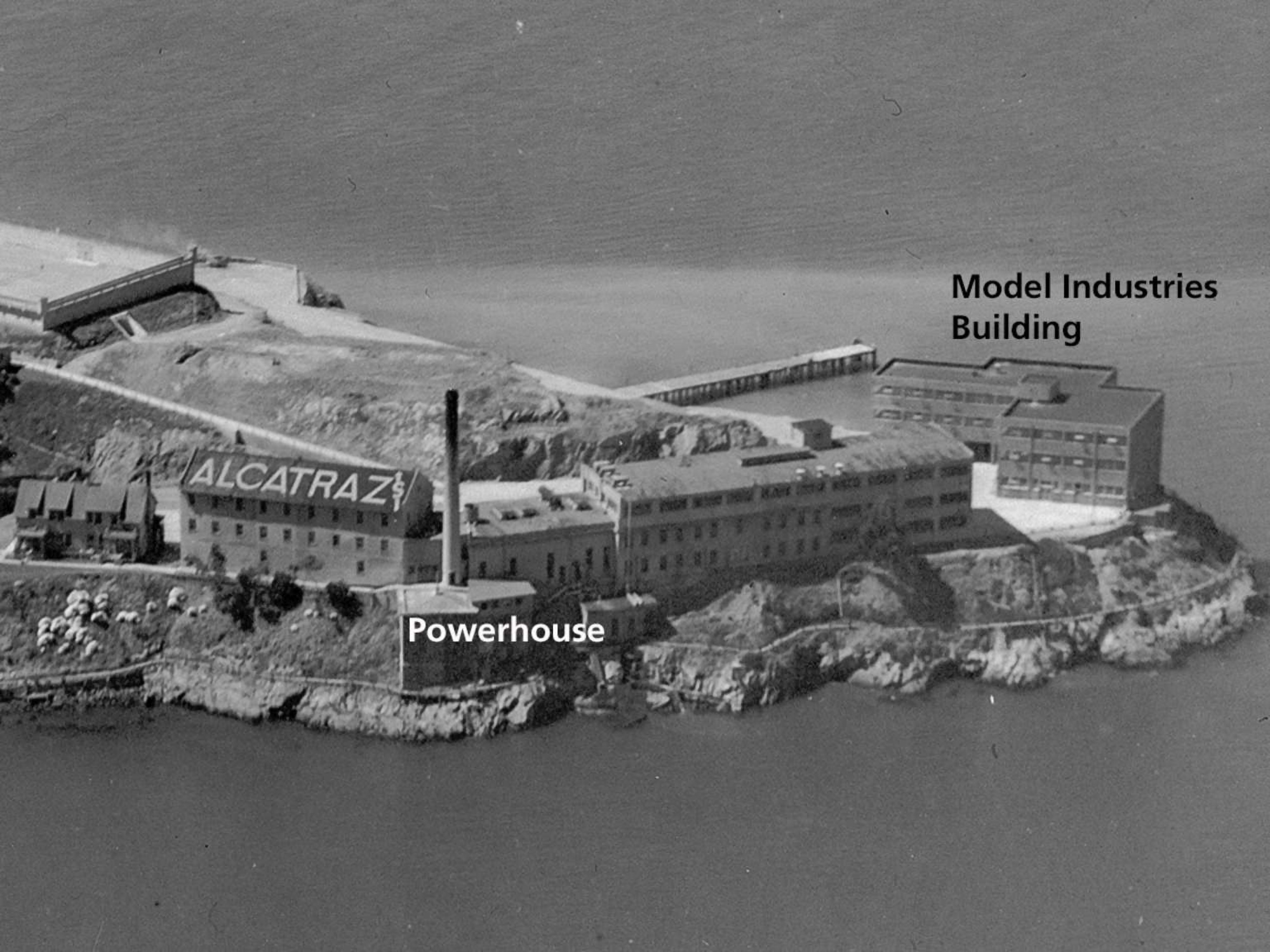
|
| Visitor Centers | Count: 1
Dock Ranger Station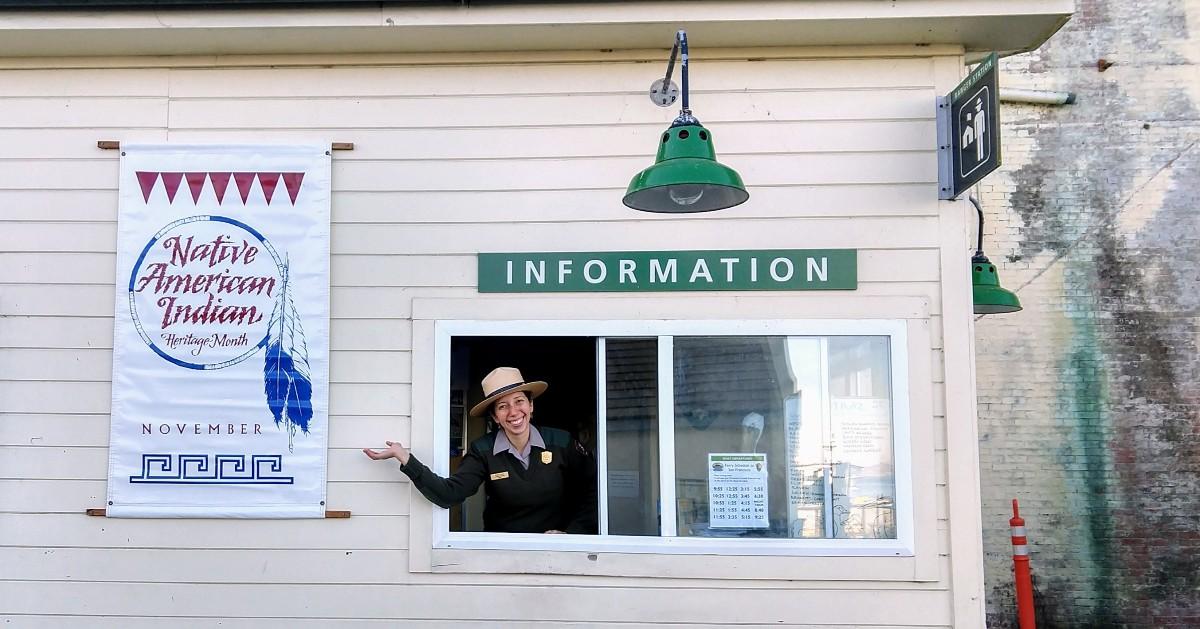
|
| Things to do | Count: 5

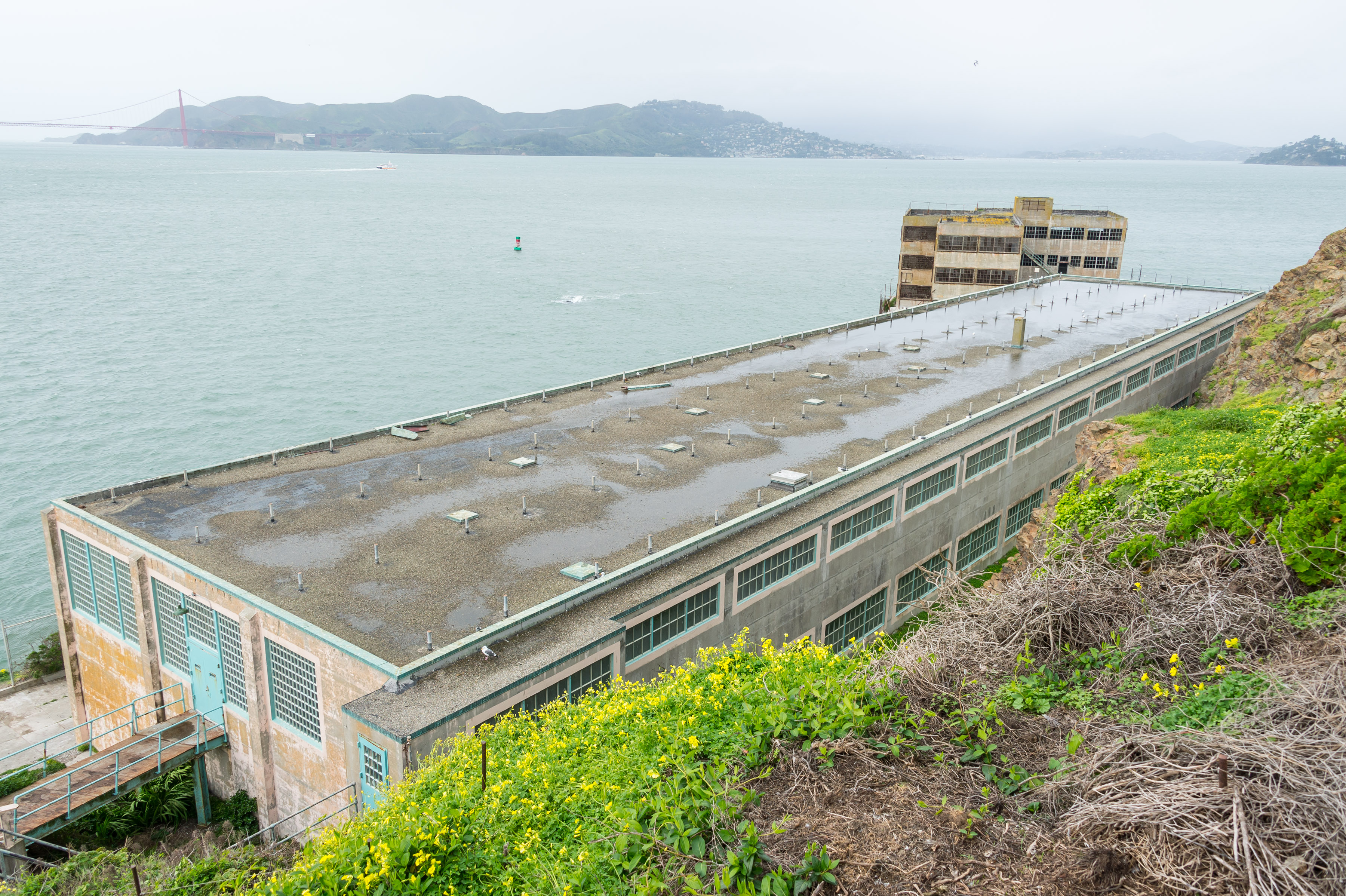
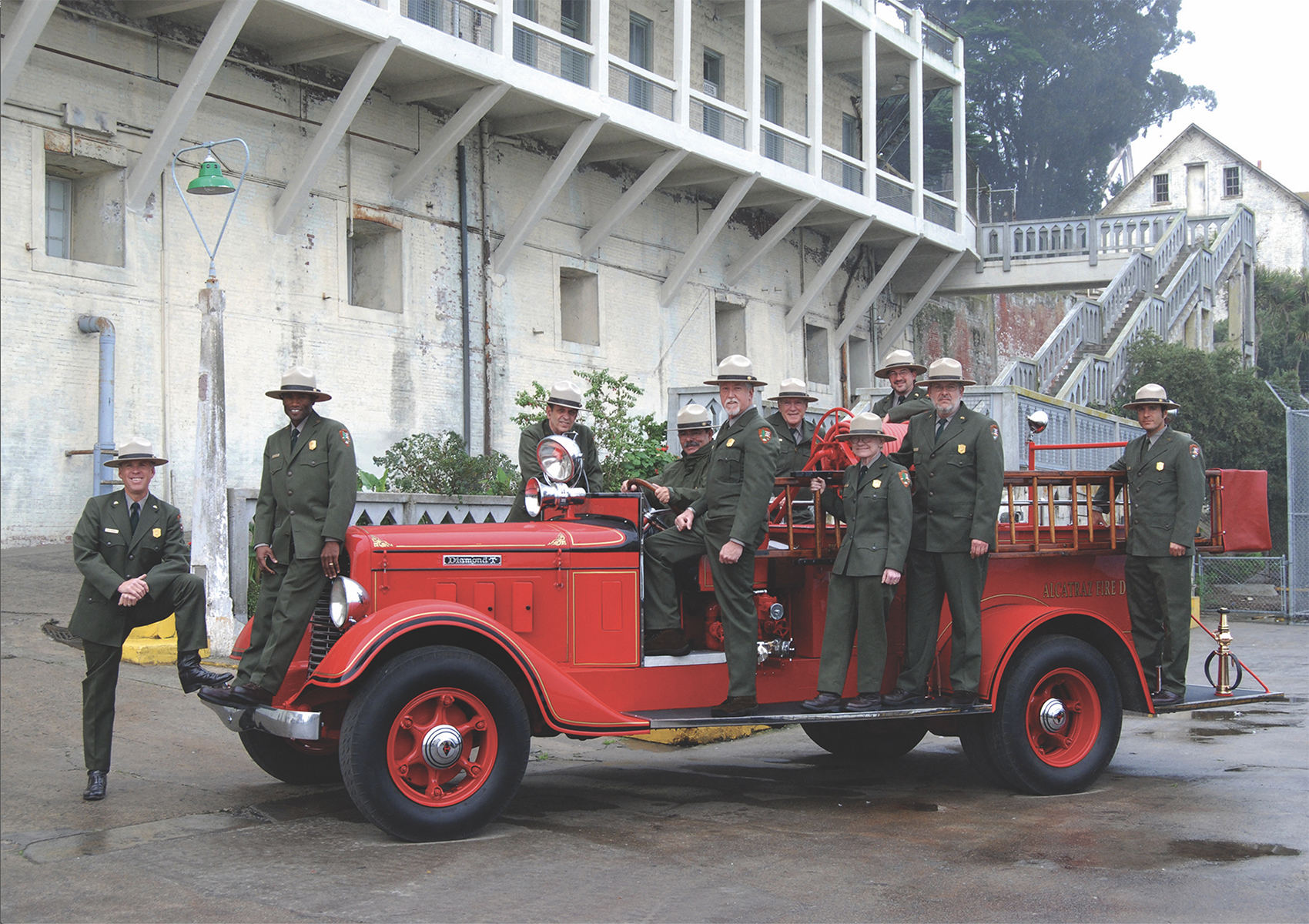
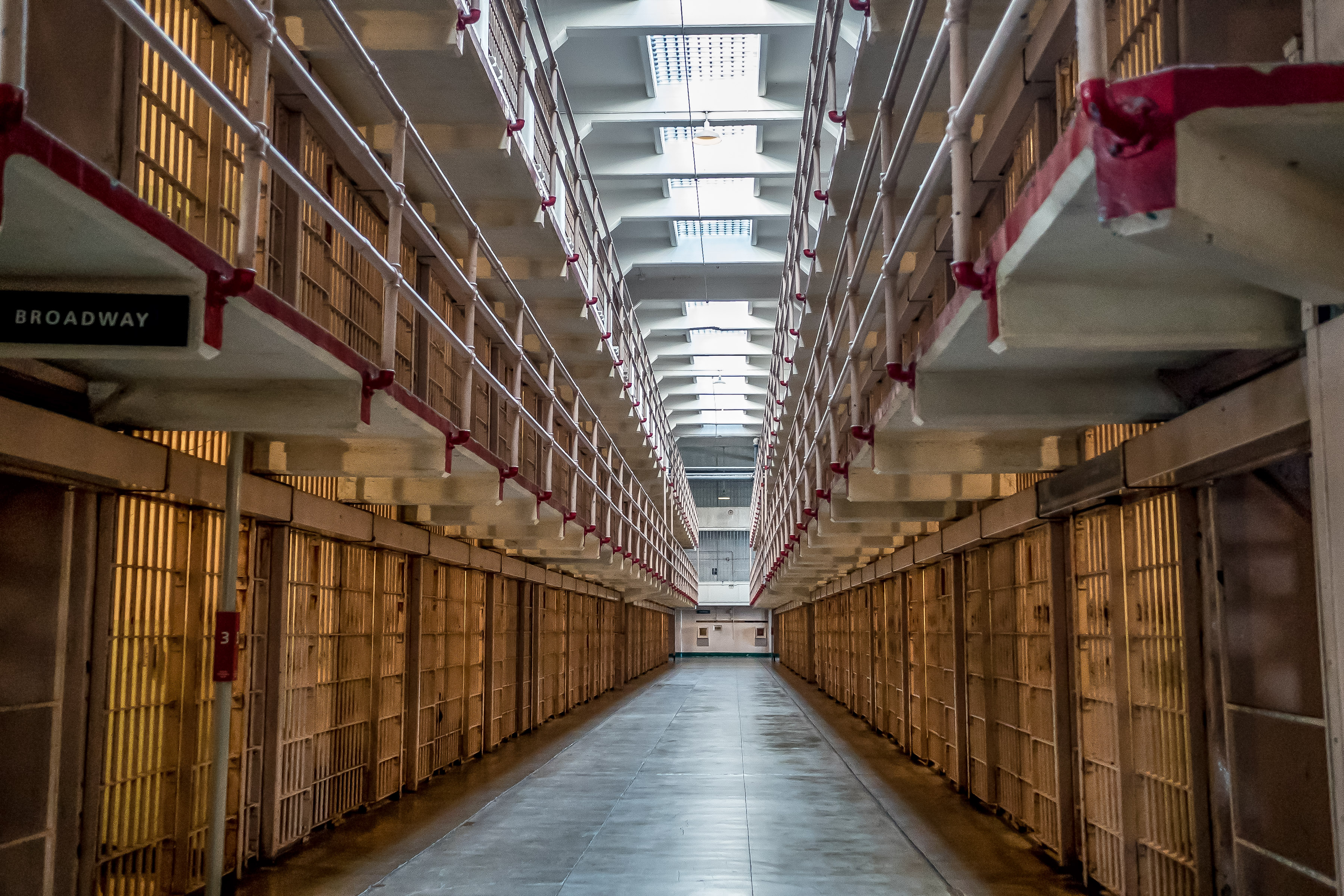
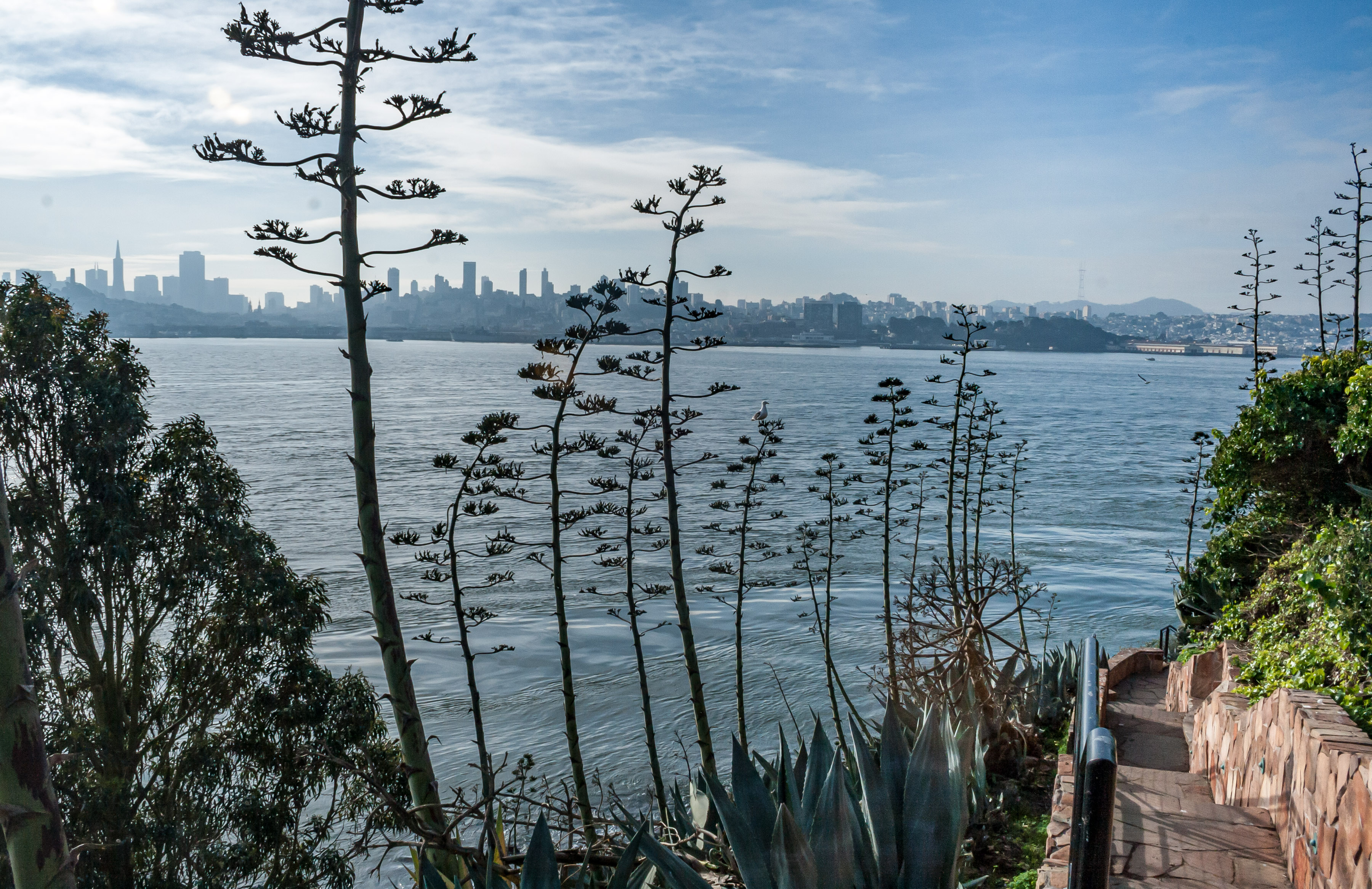
|
| Tours |
Count: 3
Prisoners at WorkLearn about prison labor over the centuries at Alcatraz and contemplate the effectiveness of making incarcerated people work for punishment or rehabilitation as they do their time. The tour is 0.25 miles (0.4 km) one way with an elevation gain of 50 feet (16 m). Red Power on AlcatrazAlcatraz Island lies within Ramaytush Ohlone territory. There is no evidence (scientific or oral tradition) regarding Ohlone use of the island. In 1969, a group of Native American students, who later known as “Indians of All Tribes,” came to occupy the island in a political protest. These students fought for inclusion into the educational system that denied them their cultural existence. On this tour, learn the story of the 19-month Indian occupation of Alcatraz Island. The tour is 0.5 mi (0.8km) one way. Seven PrisonsThis thirty-minute walking tour takes you to the sites of six different prisons on Alcatraz Island and connects their stories with our criminal justice system today, the “seventh prison.” While we explore the different sites, ask yourselves about the purpose of incarcerating people in these prisons. Did these prisons serve their purpose, and do our prisons today? |
| Articles |
|